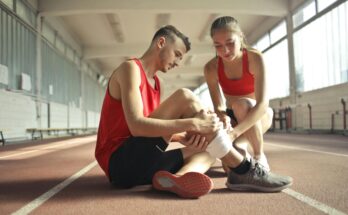Introduction:
Fitness is usually equated with exercise, nutrition, and lifestyle habits, but there is also a genetic component in determining the physical ability and responsiveness to training of an individual. Although hard work and commitment are able to maximally enhance the level of fitness, genetics is responsible for variables like muscle make-up, metabolism, endurance, and recovery. Understanding how genetics affects fitness can help in individualizing one’s exercise routine and expectations in a way to maximize results.
Genetic Determination of Fitness Variables:
1. Muscle Fiber Type
There are two major types of muscle fibers: slow-twitch (Type I) and fast-twitch (Type II). The relative proportion of these two types of fibers in an individual’s muscle is genetically determined.
– Slow-twitch fibers (Type I): Better suited at using oxygen to generate energy to support greater than a moderate quantity of steady-state activity like prolonged distance running and cycling. These are tasked with endurance performance.
– Fast-twitch fibers (Type II): Stronger and faster but also fatigue quickly. They are used for best execution of explosive strength activities like weightlifting and sprinting.
– Genetic Variation: Certain people are born with the genetic ability to be good at endurance sports because they have more slow-twitch fibers, and some are more likely to be naturally good at power-based sports because they have more fast-twitch fibers.
2. Metabolic Rate and Fat Storage
Metabolism, and how much the body is able to turn food into energy, is determined genetically.
– BMR: Basically, everybody metabolizes calories differently and finds it harder to maintain a lean body. How many calories a person loses while resting is determined genetically.
– The Distribution of Fat: Genes dictate what part of the body will get fat-hence in the belly and thighs-and dictates the danger of diseases through the threat of obesity.
– Insulin Sensitivity: Genetic difference affects the body’s capacity to metabolize carbohydrates, which consequently influences weight gain, energy reserve, and endurance performance.
3. Cardiovascular Endurance and VO2 Max
Cardiovascular fitness, or aerobic capacity, is directly correlated with VO2 max – the highest level of oxygen that the body can utilize from the air during exercise.
– Genetic Determinants: The genetic factors reveal that approximately 50 percent of the difference in VO2 max could be attributed to genetics.
– Response to Training: Some people experience significant improvements in cardiovascular endurance with training, while others see minimal changes due to genetic limitations.
– Heart and Lung Efficiency: Genetic factors influence heart size, lung capacity, and hemoglobin levels, which contribute to endurance performance.
4. Muscle Growth and Strength
Genetics plays a role in muscle hypertrophy (growth) and strength development.
– Hormonal Influence: Testosterone levels, growth hormone production, and other hormonal factors impact muscle-building potential.
– Genetic Variability in Strength Gains: Some individuals experience rapid strength gains with resistance training, while others progress more slowly due to differences in muscle fiber recruitment and protein synthesis.
– Myostatin Gene: The myostatin gene regulates muscle growth. Mutations in this gene can lead to enhanced muscle mass and strength potential.
5. Recovery and Injury Susceptibility
Recovery time and injury risk vary among individuals due to genetic differences.
– Inflammation Response: Some people experience higher levels of inflammation after intense exercise, leading to longer recovery times.
– Tendon and Ligament Strength: Genetic predisposition affects the durability of tendons and ligaments, influencing injury risk in high-impact sports.
– Oxidative Stress and Muscle Damage: Variability in antioxidant enzyme production affects how well muscles recover from strenuous exercise.
The Interaction Between Genetics and Training
Although genetics gives us a basis for fitness potential, environmental influences like training, nutrition, and lifestyle also contribute heavily to the overall fitness of an individual.
– Epigenetics: Gene expression can be affected by lifestyle, so good training and nutrition can enable people to optimize their genetic potential.
– Personalized Training: Knowledge of genetic predispositions can assist athletes and fitness enthusiasts in creating tailored training programs that are specific to their strengths and weaknesses.
– Adaptation to Exercise: Some people are “high responders” to exercise, experiencing rapid improvements, while others are “low responders,” requiring more time and effort to achieve similar results.
Conclusion:
Genetics has an important part to play in the determination of fitness potential, impacting the make-up of muscles, metabolism, endurance, strength, and recovery. But genetics is not destiny—environmental influences like training, diet, and lifestyle can assist in maximizing fitness returns. Individuals can adjust their exercise programs to suit their own specific health and performance needs by being aware of their genetic predispositions.



